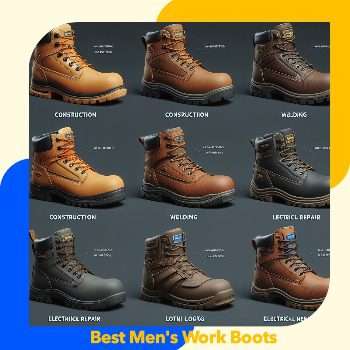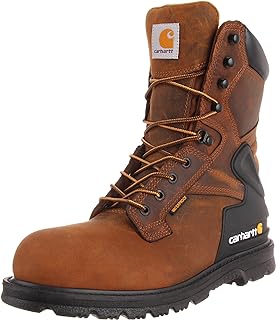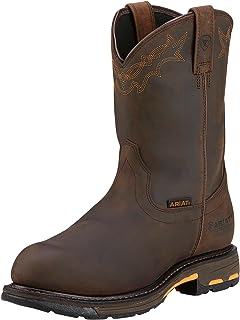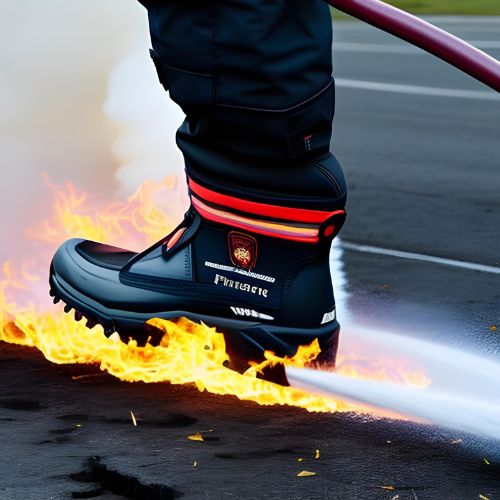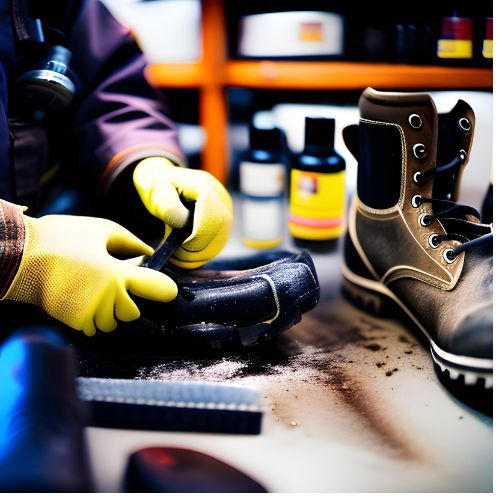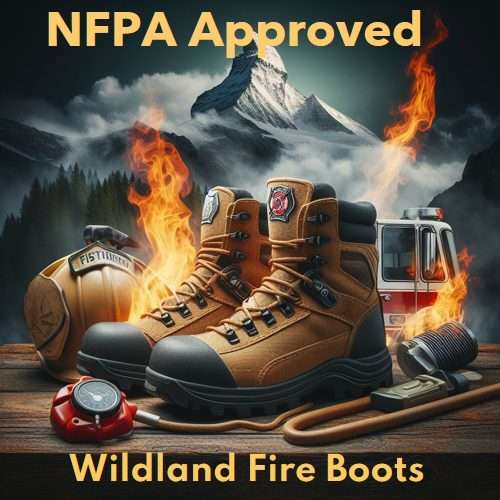The best men’s work boots are not only a matter of personal preference but are also necessary for many professions. If you work in farming, construction, or landscaping, you need boots that can support your ankles, protect your feet, and withstand tough conditions. However, how do you choose the best men’s work boots for your specific needs? What features should you look for? What are some of the top men’s work boots currently available? In this comprehensive guide, we will answer all of these questions and more. We will help you find the perfect men’s work boots for any job and offer maintenance and upkeep advice. So, let’s get started!
Table of Contents
ToggleThe Benefits of Having the Best Men’s Work Boots
Well, not only are they a fashion statement, but they are also necessary for your safety and comfort at work. Here are some benefits of wearing the best men’s work boots:
Protection:
The best men’s work boots can protect your feet from cuts, punctures, burns, sprains, and fractures, as well as from water, mud, chemicals, electricity, and extreme temperatures. Some of them even come with steel or composite toes that can prevent crushing injuries from heavy machinery or fallen objects.
Ankle Support and Flexibility:
The best men’s work boots can support your ankles, arches, and heels and prevent fatigue, pain, and inflammation. They can also provide you with stability, balance, and alignment and reduce the risk of slips, trips, and falls. Some of them include features like padded collars, cushioned insoles, and shock-absorbing midsoles, which can improve your comfort and performance. Keen, Timberland, and Thorogood stand out for producing boots that meet the changing needs of numerous professions.
Durability:
The best men’s work boots are made of high-quality materials and are crafted to last a long time. They can withstand wear and tear, retain their shape and function, and are easy to clean and maintain. Therefore, they don’t require frequent replacements.
Versatility:
The best men’s work boots are suitable for various jobs, terrains, and weather conditions. They have features such as waterproofing, insulation, breathability, and traction, which can adapt to different environments and situations. They also have a stylish and professional appearance that matches your work attire and personal taste.
Key Features of the Best Men’s Work Boots?
Now that you understand the necessity of the best men’s work boots, let’s examine the qualities you ought to consider looking for in them. Among the most significant ones are the following:
Material Matters
1. Leather:
The traditional option for comfort and durability in work boots is leather. They are renowned for their capacity to adapt to your foot with use, offering a tailored fit. Particularly full-grain leather is the gold standard because it provides outstanding durability and water resistance. It’s perfect for anyone who require footwear that can survive challenging circumstances.
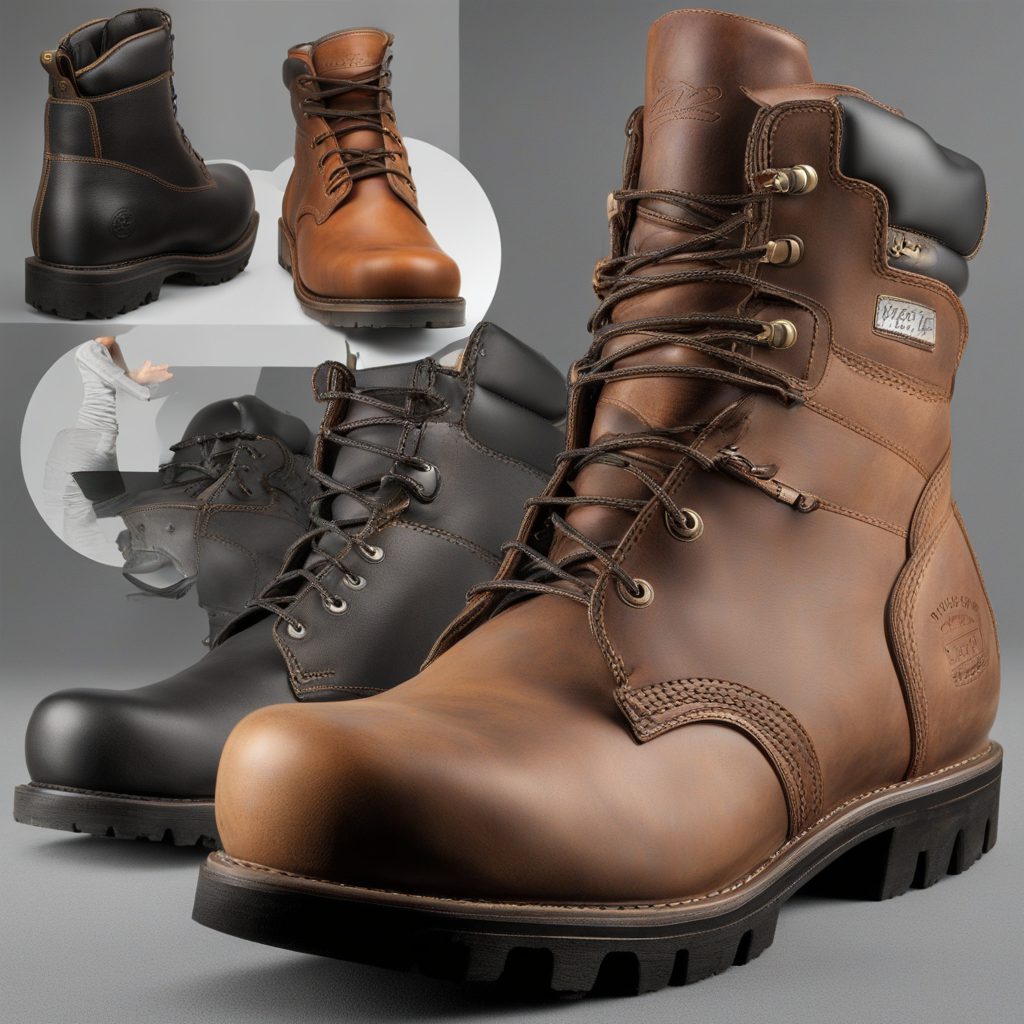

2. Synthetic:
Work boots made of synthetic materials are frequently more affordable and sometimes lighter than leather ones. They are simple to clean and have respectable water resistance. In extreme situations, they might not last as long as leather boots, but they might be a great option for occupations that aren’t as demanding.
3. Composite:
Some industrial boots use composite materials like Kevlar or carbon fiber to strike a compromise between durability and weight. Since they are non-metallic, they are perfect for settings where there are metal detectors. They might not, however, provide as much protection from punctures as steel-toed boots.
Toe Protection: Safety First
Toe protection is one of the most important features of men’s work boots, especially if your profession requires you to lift large objects or be around potential dangers. Steel toes and composite toes are the two main choices here.
1. Steel Toe:
Steel-toed boots are a classic option known for their impressive strength and ability to protect your toes from compression and falling objects. In industrial and construction situations, they are essential.
2. Composite Toes:
Composite-toed boots offer protection and are lighter than steel-toed footwear. Individuals who frequently pass through metal detectors prefer them.
Outsoles: Grip and Steadiness
Your grip on different surfaces is determined by the work boot’s outsole. The boot’s sole determines its traction, stability, and flexibility. Think about the following possibilities for the best performance:
- At first, rubber outsoles: These are suited for a variety of job conditions because of their great traction and resistance to oil and slipping.
- Next, outsoles made of PU (polyurethane) are lightweight and provide good shock absorption. They are perfect for people who stand for extended periods of time.
- Finally, thermoplastic polyurethane (TPU) outsoles offer improved abrasion resistance and durability, making them suited for rocky terrain.
Fit
Style
Comfort and Assistance:
Thermoregulation and Waterproofing
The Best Men’s Work Boot Brands and Models
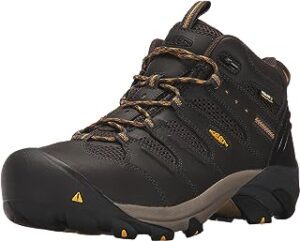

Thorogood
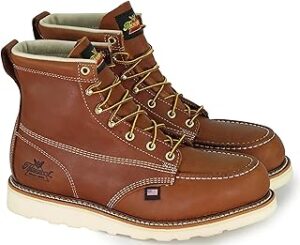

Timberland


How to Care for and Maintain the Best Men’s Work Boots?
Clean:
Condition:
Occasionally, condition your boots to restore their moisture, shine, and flexibility. You can use a leather conditioner, a wax polish, or mink oil, depending on the material and finish of your boots. Apply a thin layer of the product with a soft cloth or sponge, and buff it gently with a dry cloth. Avoid using too much product, as it can clog the pores and reduce the breathability of the boots.
Protect:
Store:
Ending Note
Investing in a good pair of men’s work boots can greatly benefit your well-being and productivity, especially if you work in a demanding profession. The right pair of boots can make your work experience more comfortable and efficient by protecting you from harsh weather conditions and providing relief for specific health issues. Whether you work in the great outdoors or in corporate settings, prioritize comfort, durability, and style when selecting your work boots. By wearing the best work boots available, you can improve your performance and get the job done more effectively.
FAQ
Most frequent questions and answers
What work boots reign supreme in the market?
The Thorogood American Heritage Series is without a doubt the best work boots on the market. They are precision-crafted and long-lasting, combining style with unrivaled performance.
Which 6-inch work boot takes the crown for comfort?
The Keen Utility Men’s Atlanta Cool 6″ Steel Toe Work Boot is the most comfortable 6-inch work boot on the market. Its superior cushioning technology ensures a fatigue-free pleasure all day long.
Are you seeking for the longest-lasting work boots?
Consider the Timberland PRO Men’s 6″ Pit Boss Steel Toe. These boots have stood the test of time, providing remarkable durability without sacrificing comfort. Your lifelong investment begins here.
Who crafts the best work shoes in the industry?
Keen, without a doubt, leads the pack in manufacturing the best work shoes. Their commitment to innovation and foot health results in work shoes that redefine comfort and performance standards.
What features make the best men's work boots for standing all day?
The best men’s work boots for standing all day prioritize comfort and support to reduce tiredness. Thorogood, Keen, and Timberland are among the companies that excel at creating ergonomic designs with advanced cushioning technology.
Do the best men's work boots have waterproof options?
Without a doubt! The best waterproof men’s work boots feature full-grain leather, which creates a protective barrier against rain and mud. For those dealing with inclement weather, these boots from well-known brands provide both style and functionality.
Which brands specialize in work boots for plantar fasciitis?
Brands like Keen and Timberland lead the way in designing the best men’s work boots for plantar fasciitis. These boots prioritize arch support and cushioning, providing relief for individuals dealing with this common foot condition.
What options are available for those with wide feet?
The best men’s work boots for wide feet come from brands like Thorogood and Keen. These boots ensure a snug yet comfortable fit, addressing the challenge faced by individuals with wider feet.
Can work boots relieve back pain?
Of course! The best men’s work boots for back pain have characteristics like super-thick midsoles that absorb shock and reduce the strain on the lower back.
How do work boots provide ankle support and flexibility?
The best men’s ankle support work boots prioritize stability without sacrificing agility. Boot brands such as Keen, Timberland, and Thorogood excel at meeting the changing needs of numerous professions.
What distinguishes Thorogood work boots from others?
Thorogood work boots are well-known for their strength and comfort. Discover the qualities that make Thorogood a popular choice, from steel-toe alternatives to those that cater to specific foot ailments.
Why choose Keen work boots for your professional needs?
Keen work boots are associated with innovation and a dedication to foot health. Discover how Keen’s work boots stand out in a crowded market by combining quality and elegance.
What makes Timberland work boots iconic in the industry?
Timberland work boots are famous for their signature yellow pattern, which represents durability and style. Discover how Timberland’s work boots, including steel-toe options, set the standard for performance and style.
How do I choose the right men's work boots for my specific needs?
Think about your work environment, employment responsibilities, and any special health concerns. Look for boots that promote comfort, durability, and style, and make sure they match your outfit.
What distinguishes the most comfortable work boots for men?
The most comfortable work boots prioritize advanced cushioning technologies and ergonomic designs. Brands like Thorogood and Keen lead the market by crafting boots that redefine comfort standards, ensuring your feet remain at ease even during extended work hours.
Do the best men's work boots with removable footbeds exist?
Absolutely. Several leading brands, such as Keen and Timberland, offer work boots equipped with removable footbeds. This feature not only enhances comfort but also allows for customization to meet individual orthopedic needs.
As an Amazon Associate and Adidas associate, I get money from qualifying purchases and may make money from links on this website.

